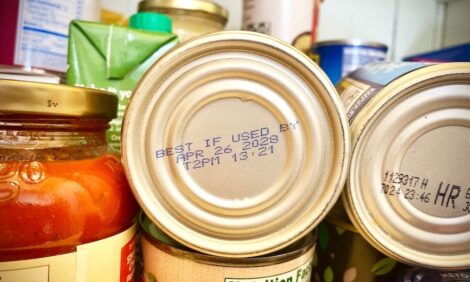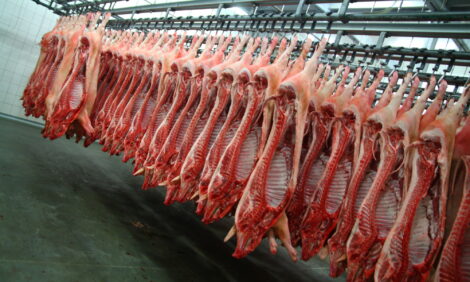



United Kingdom Pig Meat Market Update - June 2011
The DAPP in the UK has continued its upward trend in recent weeks, while the average EU price has continued to increase steadily from its low point in January, according to James Park, senior economic analyst with AHDB Meat Services Economic and Policy Analysis Group in his latest explanation of the trends in the UK and EU.UK Prices
The upward trend in the DAPP has gained further momentum in recent weeks as tight pig meat supplies have continued to lift prices on the UK market and in early May, pig prices rose above 2010 values for the first time in 2011. The DAPP finally moved above 150p/kg deadweight (dw) at the beginning of June, six pence above the level of four weeks earlier but only five pence more than in early June 2010. However, as the estimated cost of production in June is 162p/kg then producers are still operating on negative margins.
By the beginning of May, the UK pig price was no longer above the average EU price as the latter continued to increase steadily from its low point in January. However, as the EU market price edged back during May then a modest price premium for the UK re-emerged. While the May 2011 average price in the UK in Euro was unchanged on a year earlier, the EU price averaged 13 per cent more.

Average carcass weights in the DAPP sample fell in April and continued to decline during May as producers try to reduce feed bills by finishing to lower weights. Weights in May were down 3kg compared with the end of February although there is normally some seasonal decline over the period.
The weaner price has also moved up but was still significantly below year earlier quotations. The 30-kg GB weaner price increased to just above £45 per head in May, almost £6 per head higher than in the previous month.
Culled sow market prices have fallen back during May partly since prices on the German market fell back during the month. The May average price was five per cent more than a year earlier.
EU Prices and Exchange Rates
The downturn in the EU price in May reflected in somewhat lacklustre demand and the start of the release of stocks from the private storage aid scheme introduced in February. The majority of these stocks will be released in June. EU pig slaughterings so far in 2011 have been running ahead of last year including in Denmark and the Netherlands.
The sterling:Euro exchange rate for April showed no change on a year earlier but into May, it had fallen to below last year's level.

UK Slaughterings and Pig Meat Supplies
In April 2011, clean pig slaughterings in the UK were up four per cent, at 889,000 head on a year earlier, despite declining throughputs compared with March this year. Lower throughput continued into May. In April, there was a 15 per cent increase in Scottish slaughterings while those in England and Wales were up three per cent.

UK clean pig carcass weights in April were down marginally year on year to 77.5kg but this did little to affect production, which was up nearly four per cent at 72,500 tonnes. Adult pig carcass weights moved up in April being 6kg more than in March this year and up 9kg on April 2010.

In the first quarter of 2011, exports of fresh and frozen pork totalled 34,000 tonnes, up seven per cent year-on-year. This was helped by a narrowing of the price difference between UK prices and those in continental Europe. However, exports to the UK's main markets, including Germany, during the quarter were mostly lower. This was more than offset by increased volumes to other markets, notably Hong Kong, France, Denmark and Belgium. Bacon exports during the first quarter were up 50 per cent to total over 8,000 tonnes. Offal exports were up 40 per cent to 7,400 tonnes mainly due to an 84 per cent increase in trade with Hong Kong.
In January-March 2011, imports of fresh and frozen pork were up one per cent on year-earlier levels at 87,000 tonnes. Volumes sourced from Denmark were significantly higher, increasing by 37 per cent to 26,000 tonnes. However, this increase was mostly entirely offset by reduced shipments from the Netherlands and Belgium. Bacon imports in the first quarter totalled 72,000 tonnes, 14 per cent lower on the year. The growth in live pig imports is slowing down being only up 10 per cent in the first quarter on a year earlier and amounted to 169,000 head.
Feed Prices
The situation for global grain markets is one of low stocks of wheat and maize being held in the EU and US and the 2011 harvest, which is needed to replenish these stocks, is under great scrutiny as wet weather in the US delays plantings and dry weather in the EU is reducing yield potential.
In the US, rainfall in April was between 150 and 400 per cent above normal. The wet weather has continued into May and planting progress has been slowed dramatically to be at 63 per cent complete, which is 12 per cent behind the five-year average and 24 per cent behind progress of a year ago. These clouds may have a silver lining though, as the heavy rainfall will boost soil moisture levels and could promote healthy growth of crops that are planted.
For Europe, the opposite situation has occurred. Dry weather over the last three months has spurred on growth in wheat crops and limited progress of spring crop development. Crops across much of Europe are already at a yield-forming stage at a time in the year when hours of sunshine and radiation levels are below optimum levels.
In France, analysts Agritel have forecast 2011 wheat output to fall by 11.5 per cent to 31.7 million tonnes. The reduction in production is seen as a direct consequence of the prolonged period of dry weather. Yields in France in 2011 are forecast 13 per cent lower at 6.31 tonne per hectare, down from 7.25 tonnes a year ago.
In Germany, again due to the recent dry weather, 2011 production is also forecast to be lower. The German Farm Co-Operatives Association puts 2011 total grain production at 40.7 million tonnes, down from 44.2 million tonnes in 2010 and 44.1 million tonnes forecast in April. For rapeseed, the German crop is forecast to fall by 23 per cent from a year ago to 4.4 million tonnes; forecasts in April put the 2011 rapeseed crop at 5.1 million tonnes.
The impact of the lower production estimates in the EU and dry weather has been to spur new-crop contract prices to set new highs.
Here in the UK, the dry weather has also been the main cause for concern, with many areas during March and April recording less than 20 per cent of normal seasonal rainfall. Comparisons have been drawn to 1976, a year in which the UK also suffered from a lack of rainfall. However, UK wheat yields from 1975 to 1976 only reduced by 11.3 per cent to 3.85 tonnes per hectare. Over the next 35 years, UK wheat yields increased to average 7.8 tonne per hectare between 2000 and 2010, with the combined effects of increases in technology on-farm and developments in plant breeding attributing to this yield increase.
The dry weather in the UK will have an impact upon yield formation despite better rains recently in most parts of the country. However, with great uncertainty over the longer-term supply and demand balance of global grains and oilseeds, 2011 is to remain a volatile year for prices. The LIFFE Nov-11 contract amounted to £193 per tonne at the beginning of June. This level is only £7 lower than that on the physicals market in the first four months of 2011. On the other hand, current soybean meal prices are now well down on January levels.


Given that the estimated cost of production has edged back in recent months and the upturn in pig prices, then on average in June, producers are now losing less than £10 per pig compared with £25 earlier in the year.
Consumption
Data from Kantar Worldpanel indicated that the volume of pork purchased in the four weeks to 17 April showed an increase of four per cent to 14,800 tonnes compared with a year earlier, helped by a three per cent fall in the average purchase price. Frying and grilling steaks and belly performed well up 19 per cent and 13 per cent, respectively, while the rise for shoulder roasting joints was as much as 58 per cent. Bacon also performed well with purchases up three per cent year-on-year.
In the 12 weeks to 17 April, pork purchases showed an increase of two per cent year on year. Pork continues to perform well relative to other meats, all of which experienced a fall in purchases. This is partly given strong promotions on pork by major retailers. Expenditure was up one per cent. The number of households purchasing pork increased during the period, as did the frequency of purchases and the amount bought on each shopping trip. Note though the Easter period was much later this year and so not included in the purchase data.
Purchases of loin roasting joints in the 12 weeks to 17 April were considerably lower year-on-year, down 35 per cent. Similarly, purchases of leg roasting joints and frying and grilling chops also declined, down 12 and seven per cent, respectively. In contrast, purchases of all other cuts increased in particular shoulder roasting joints and frying and grilling steak up 25 and 15 per cent, respectively.
For the trends in retail meat purchases for the period ending on 17 April 2011 from Kantar Worldpanel, click here.
June 2011








